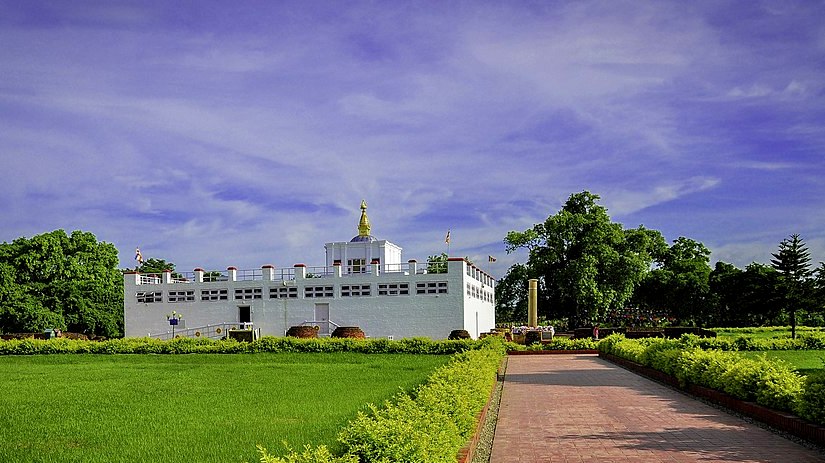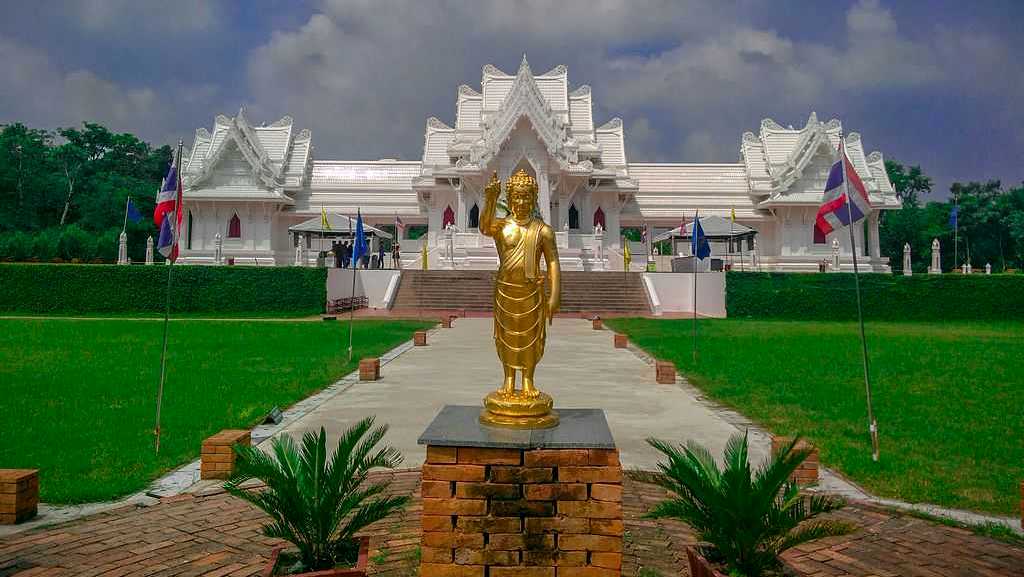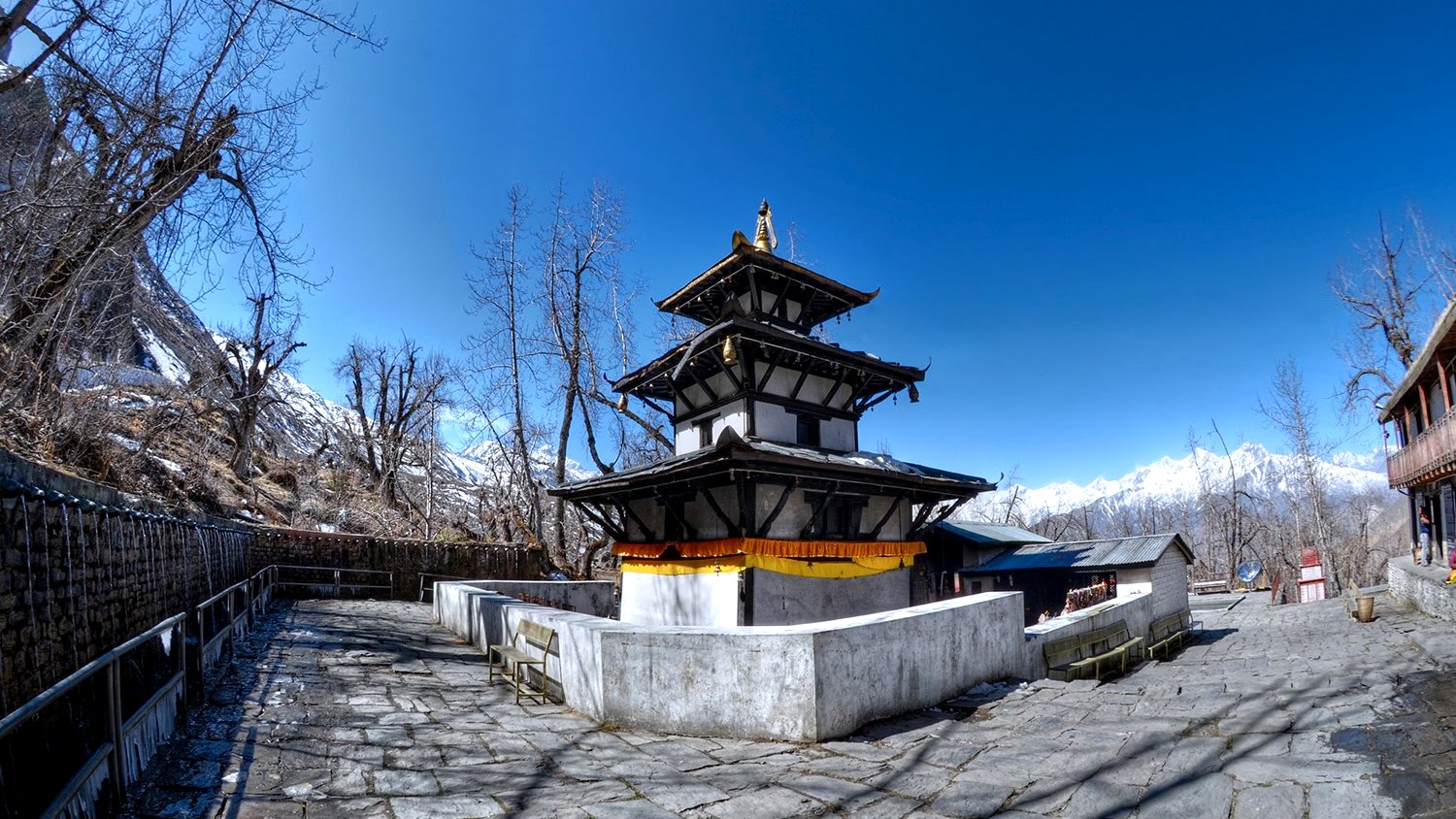Cultural and Historical Tours in Nepal
Nestled amidst the towering peaks of the Himalayas, Nepal is a treasure trove of cultural and historical wonders, waiting to be explored. The country's rich tapestry of traditions, spirituality, and history offers an unparalleled experience for travelers. Cultural and Historical Tours in Nepal are not just journeys through scenic landscapes, but also an immersion into a world where ancient traditions and modernity coexist harmoniously. From the vibrant streets of Kathmandu, with its ornate temples and bustling markets, to the tranquil serenity of Lumbini, the birthplace of Buddha, each destination offers a unique glimpse into the heart of Nepalese heritage. Exploring the ancient kingdoms of Mustang and the art-filled alleyways of Bhaktapur and Patan, these tours promise an enriching experience that blends the allure of bygone eras with the vibrancy of contemporary Nepalese culture. Whether it's through the spiritual journey of a Muktinath pilgrimage or the exploration of ethnic villages, every step in Nepal is a step through a rich historical tapestry, making it an ideal destination for those seeking a profound cultural connection.

We pride ourselves on being the premier choice for discerning travelers seeking the most authentic and enriching Cultural and Historical Tours in Nepal. Our deep-rooted passion for Nepal’s rich heritage and our commitment to excellence in service sets us apart as the best tour company in the region. With a keen focus on offering immersive experiences, we meticulously design our tours to showcase the vibrant tapestry of Nepalese culture and history. From the ancient streets of Kathmandu to the sacred grounds of Lumbini, each journey with us is crafted to not only visit destinations but to live the stories that they hold. Our team of experienced and knowledgeable guides ensures that every aspect of your tour is enlightening, comfortable, and tailored to your interests. At Luxury Holidays Nepal, we don't just organize tours; we create memories that last a lifetime, making us the best choice for anyone looking to deeply explore the cultural and historical riches of Nepal.
Kathmandu Valley Cultural Tour
The Kathmandu Valley Cultural Tour, part of the Cultural and Historical Tours in Nepal offered by Luxury Holidays Nepal, is an exceptional journey into the heart of Nepal's rich cultural heritage. This tour encapsulates the essence of Nepal's history, art, and spirituality, making it a must-experience for anyone fascinated by the diverse tapestry of Nepalese culture. Here are the key components of this tour:
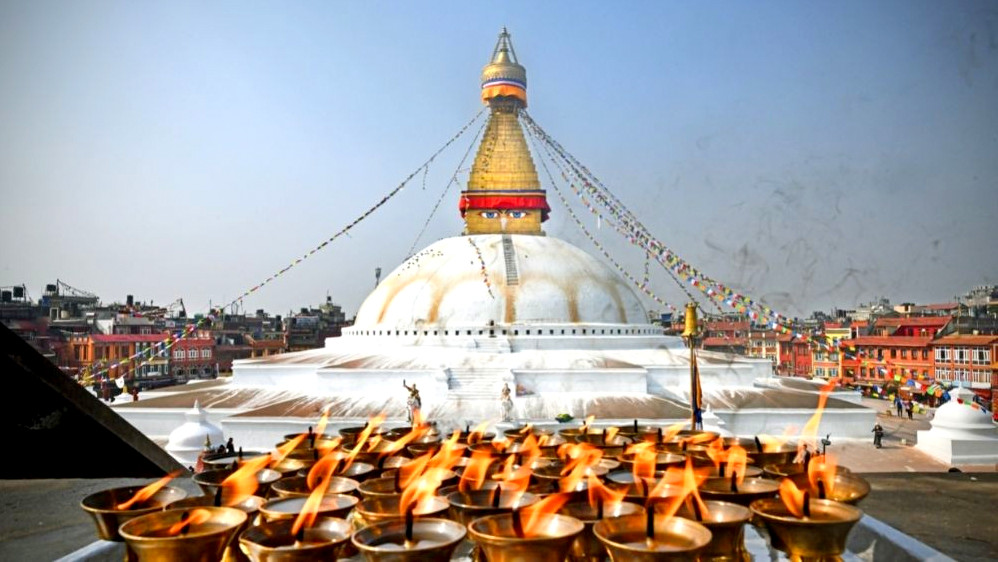
Exploration of Kathmandu City
- Swayambhunath Stupa: A revered ancient religious complex, also known as the Monkey Temple, offering panoramic views of the city.
- Pashupatinath Temple: A significant Hindu temple dedicated to Lord Shiva, located along the sacred Bagmati River.
- Kathmandu Durbar Square: This historic palace square is a showcase of exquisite temples and a testament to the craftsmanship of Newar artists.
Visit to Patan
- Patan Durbar Square: Renowned for its artistic heritage, this square features beautifully carved temples and the renowned Patan Museum.
- Experiencing Traditional Newari Culture: The tour also explores the rich Newari culture in Patan, known for its traditional arts and crafts.
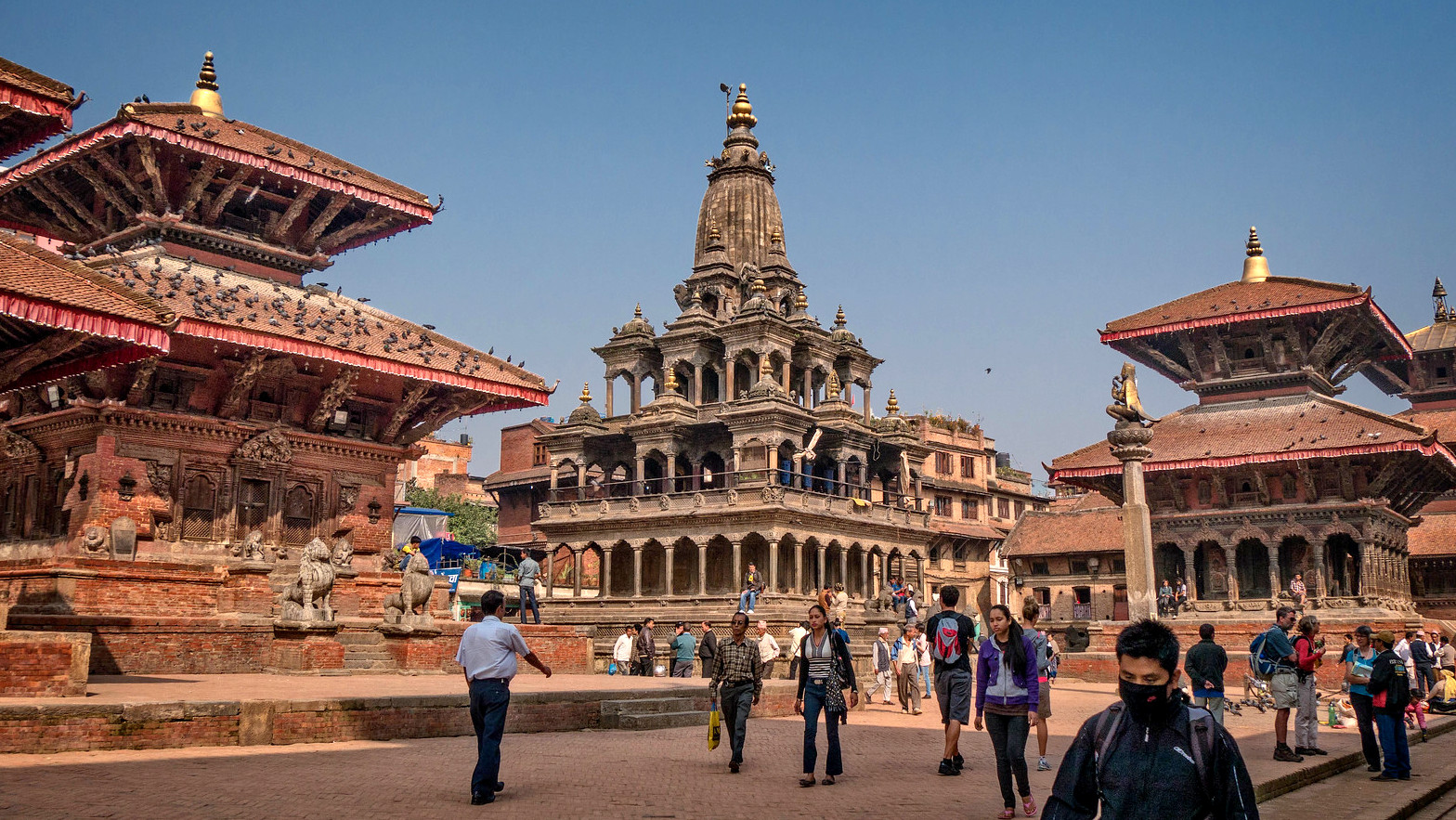
Bhaktapur City Tour
- Bhaktapur Durbar Square: A UNESCO World Heritage Site, it is celebrated for its architectural splendor and the iconic Nyatapola Temple.
- Discovering Traditional Crafts: Bhaktapur is famous for its pottery and local handicrafts, integral to its cultural identity.
Cultural Immersion
- Engaging with Local Festivals and Markets: The tour may include experiencing local festivals and bustling markets, offering a slice of Nepalese daily life.
- Culinary Experiences: Savor the unique flavors of authentic Nepalese cuisine.
Historical Insights
- The tour is enriched with historical narratives provided by expert guides, enhancing the understanding of Nepal's cultural evolution.
Art and Craftsmanship
- Visits to local artisans' workshops demonstrate traditional Nepalese arts like Thangka painting, wood carving, and metalwork.
Scenic Beauty and Serenity
- The Kathmandu Valley is not just culturally rich but also offers tranquil moments amidst lush landscapes and serene settings.
This Kathmandu Valley Cultural Tour is a deep dive into the heart of Nepal's historical and cultural grandeur, presented with the expertise and luxury that Luxury Holidays Nepal is known for.
Lumbini Pilgrimage Tour
Pokhara Cultural Tour
The Pokhara Cultural Tour, an integral part of the Cultural and Historical Tours in Nepal offered by Luxury Holidays Nepal, provides a unique opportunity to explore the vibrant culture, natural beauty, and historical significance of Pokhara. Nestled beside a tranquil lake and surrounded by majestic mountains, Pokhara is not just a hub for adventurers but also a treasure trove of cultural attractions.
Highlights of the Pokhara Cultural Tour
-
Phewa Lake and Tal Barahi Temple: A boat ride on Phewa Lake to visit the Tal Barahi Temple, located on an island in the lake, is a serene experience. The lake itself is a focal point of Pokhara’s culture and leisure activities.
-
Bindhyabasini Temple: Situated on a hill overlooking the city, this ancient Hindu temple is dedicated to Goddess Bhagwati. It offers a peaceful spiritual atmosphere along with panoramic views of Pokhara.

-
Old Pokhara City: Exploring the old parts of Pokhara City reveals traditional bazaars and ancient architecture that reflect the history and culture of the region.
-
International Mountain Museum: This museum provides insights into the mountains of Nepal, the mountaineers who climbed them, and the people who call them home. It’s a celebration of Nepal’s mountaineering history and the culture of the Himalayan region.
-
Gupteshwor Cave and Davis Fall: Visit the mysterious Gupteshwor Cave with its naturally formed Shiva Lingam and witness the beauty of Davis Fall, a stunning waterfall that disappears underground.
-
Seti River Gorge: View the impressive Seti River Gorge with its deep and narrow canyons, carved by the Seti River.
-
Tibetan Refugee Camps: Learn about the Tibetan culture and observe traditional Tibetan crafts at the Tibetan Refugee Camps in Pokhara.
-
Local Cuisine and Shopping: Enjoy the local flavors of Pokhara and explore the city’s vibrant markets for souvenirs and handicrafts.
-
Sarangkot Sunrise View: For those interested, a morning trip to Sarangkot offers a breathtaking sunrise view along with a panoramic vista of the Annapurna and Dhaulagiri mountain ranges.
The Pokhara Cultural Tour is an excellent blend of natural beauty, cultural richness, and historical exploration, making it a must-visit for anyone seeking to experience the diverse facets of Nepal's heritage. This tour offers a unique perspective of the serene yet vibrant life in one of Nepal’s most picturesque cities.
Chitwan Cultural Tour
The Chitwan Cultural Tour, as part of the Cultural and Historical Tours in Nepal offered by Luxury Holidays Nepal, takes you on an enriching journey to the Chitwan district, known for its diverse wildlife and the unique culture of the indigenous Tharu people. This tour combines the thrill of wildlife exploration in Chitwan National Park with the discovery of local cultural traditions, offering a multifaceted experience of Nepal's natural and cultural heritage.
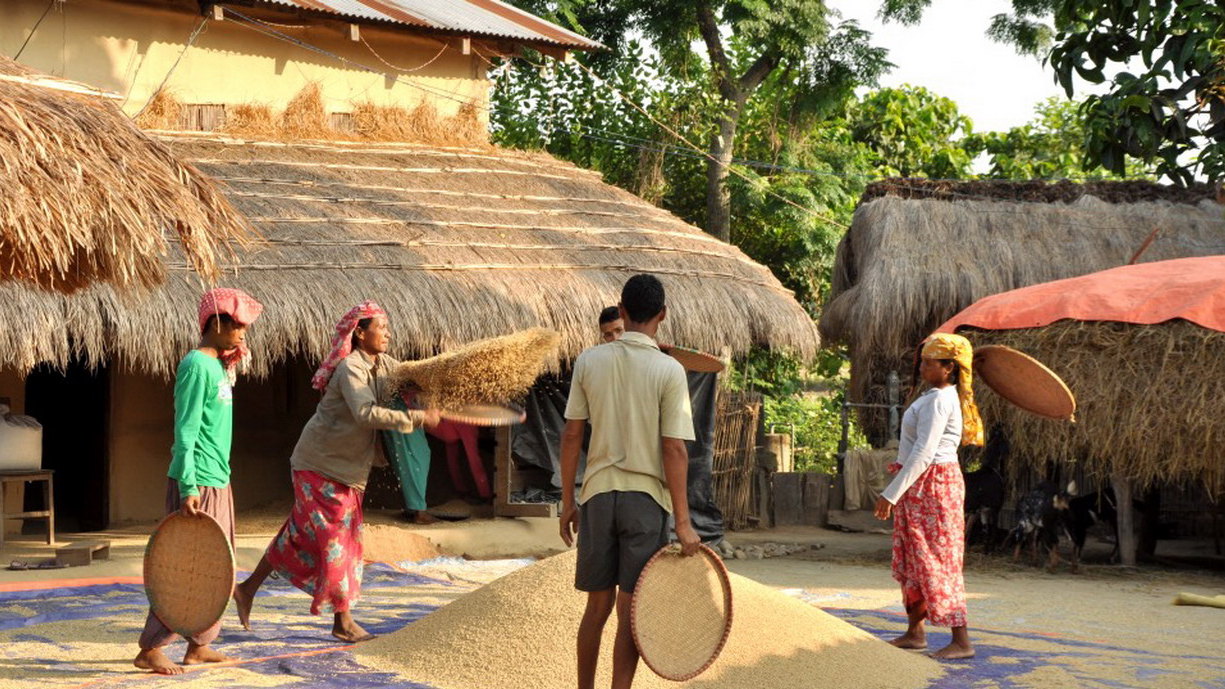
Highlights of the Chitwan Cultural Tour
-
Chitwan National Park Safari: The heart of the tour, this safari in Nepal's first national park, offers a chance to see diverse wildlife including rhinos, tigers, elephants, and a variety of bird species in their natural habitat.
-
Tharu Village Visit: Explore the traditional villages of the Tharu people, known for their unique culture, dances, and sustainable living practices closely tied to the local environment.
-
Cultural Performance: Enjoy a traditional Tharu cultural dance performance, which is not only entertaining but also a window into the rich cultural heritage of the Tharu community.
-
Elephant Safari or Elephant Bathing: Experience an elephant safari, which provides a unique perspective for wildlife viewing, or participate in elephant bathing, an interactive and fun activity.
-
Canoe Ride on the Rapti River: A serene canoe ride on the Rapti River offers opportunities to view aquatic wildlife and enjoy the tranquil natural environment.
-
Visit to the Elephant Breeding Center: Learn about the conservation efforts for elephants at the breeding center, which plays a crucial role in preserving these majestic creatures.
-
Bird Watching: Chitwan National Park is a haven for bird enthusiasts, offering the chance to see numerous native and migratory bird species.
-
Local Cuisine: Sample the local cuisine, which includes dishes unique to the Tharu community, providing a taste of the local culinary traditions.
-
Jungle Walks and Nature Exploration: Guided jungle walks offer a closer look at the park's flora and fauna and an immersive experience of the natural beauty of the area.
The Chitwan Cultural Tour is an ideal blend of adventure, wildlife, and cultural exploration, perfect for those looking to experience the diverse ecological and cultural aspects of Nepal. It provides a unique opportunity to engage with the natural beauty of Nepal's Terai region and the rich cultural traditions of its indigenous inhabitants.
Historical Tour of Gorkha
The Historical Tour of Gorkha, part of the Cultural and Historical Tours in Nepal curated by Luxury Holidays Nepal, is a profound journey into the birthplace of the unifier of Nepal, King Prithvi Narayan Shah, and the ancestral home of the Shah dynasty. Gorkha, a small yet historically significant town, is renowned for its historical monuments, rich history, and its role in the unification of Nepal. This tour offers a deep dive into the roots of Nepalese nationality and the region's unique cultural heritage.
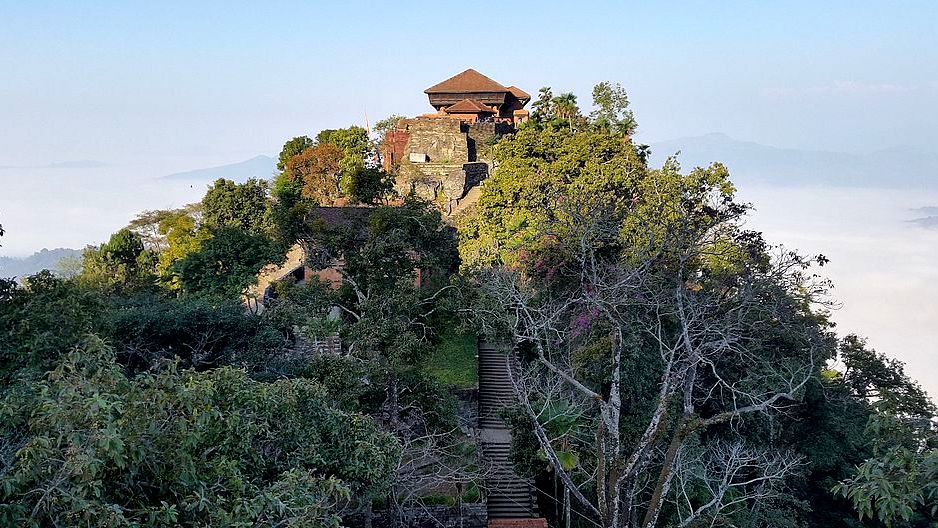
Highlights of the Historical Tour of Gorkha
-
Gorkha Durbar (Palace): A major highlight of the tour, the Gorkha Durbar is a historical fortress and palace perched atop a hill. It is an architectural masterpiece, combining religious, residential, and administrative functions, and offers panoramic views of the surrounding valleys and the Himalayas.
-
Gorakhnath Cave: Near the palace lies the sacred cave temple of Gorakhnath. It is a significant religious site, dedicated to the saint Gorakhnath, and holds great importance in the local culture and history.
-
Gorkha Museum: The museum in Gorkha offers insightful glimpses into the history of the Gorkha kingdom, including artifacts, weaponry, and documents related to King Prithvi Narayan Shah and the unification of Nepal.
-
Local Temples and Shrines: The tour includes visits to various temples and shrines around Gorkha, each with its unique history and religious significance.
-
Traditional Newari Town: Exploring the town of Gorkha itself is like stepping back in time. The area is known for its traditional Newari architecture and lifestyle, giving visitors a sense of Nepal's rich cultural diversity.
-
Scenic Hiking Trails: The journey to Gorkha Durbar involves a scenic hike, providing a refreshing experience amidst nature and offering stunning views of the Manaslu and Annapurna mountain ranges.
-
Culinary Experiences: Enjoy traditional Nepalese cuisine in Gorkha, offering an authentic taste of the local flavors and culinary practices.
-
Cultural Insights by Expert Guides: Luxury Holidays Nepal's knowledgeable guides provide in-depth historical context and cultural insights, making the tour not only a visual but also an educational experience.
The Historical Tour of Gorkha is an essential experience for those interested in the roots of Nepalese nationality and the rich tapestry of the country’s history. This tour offers a unique opportunity to explore the origins of modern Nepal, set against the backdrop of stunning natural beauty and rich cultural heritage.
Janakpur Cultural Tour
The Janakpur Cultural Tour, a significant part of the Cultural and Historical Tours in Nepal offered by Luxury Holidays Nepal, is an enriching journey into the heart of Janakpur, a city steeped in mythological and historical significance. Janakpur, also known as the birthplace of Goddess Sita and the setting for much of the ancient Hindu epic Ramayana presents a unique blend of cultural heritage, religious significance, and historical depth.
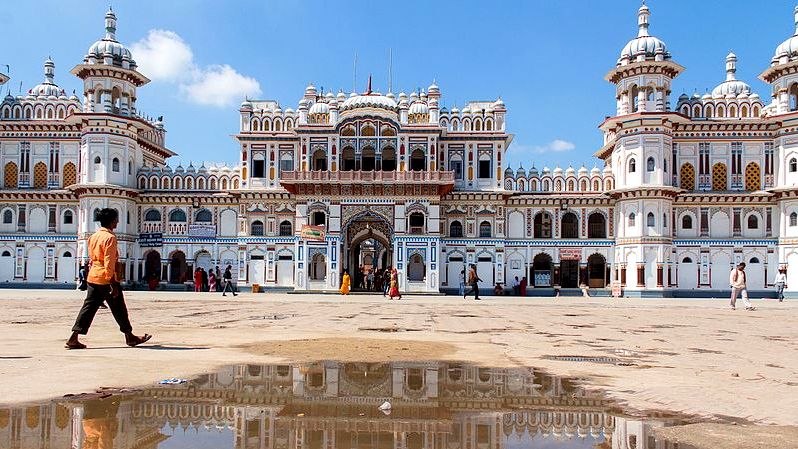
Highlights of the Janakpur Cultural Tour
-
Janaki Temple: The centerpiece of the tour is the Janaki Temple, an architectural marvel dedicated to Goddess Sita. This temple, often referred to as the Nau Lakha Mandir (Temple of Nine Lakh), is famous for its grandeur and intricate design.
-
Ram Janaki Vivah Mandap: This is the legendary spot where Lord Ram and Goddess Sita were married, and it holds immense religious significance. The temple complex is adorned with beautiful artwork depicting scenes from the Ramayana.

-
Ram Sita Bibaha Mandap: Another significant site in Janakpur, this mandap is believed to be the actual venue of the marriage ceremony between Lord Ram and Sita, attracting devotees and tourists alike.
-
Historical Ponds: Janakpur is home to many historical ponds used in sacred rituals and ceremonies. The most famous ones include Ganga Sagar, Dhanush Sagar, and Ratna Sagar, each with its own mythological story.
-
Cultural Walks and Local Markets: The tour includes walks through local markets and neighborhoods, offering insights into the daily life and culture of the Maithil people, known for their art and crafts, especially Mithila paintings.
-
Mithila Art and Craft Centers: Janakpur is the hub of Mithila art, characterized by intricate geometric patterns and vibrant colors. Visitors can explore local art centers and interact with artisans.
-
Traditional Maithil Cuisine: Sampling the local cuisine, which includes unique flavors and dishes specific to the Mithilanchal region, is an integral part of the tour.
-
Cultural Performances and Festivals: Depending on the timing of the visit, guests can witness traditional Maithil cultural performances and festivals, which are deeply rooted in the region's history and mythology.
-
Insights from Expert Guides: Luxury Holidays Nepal provides experienced guides who offer in-depth knowledge about Janakpur’s history, culture, and religious significance, enhancing the tour experience.
The Janakpur Cultural Tour is an ideal exploration for those looking to delve into the rich tapestry of Hindu mythology, Maithil culture, and the historical narratives that shape the identity of this fascinating region of Nepal. It offers a unique perspective into the cultural and religious traditions that are central to the Nepalese way of life.
Ancient Newari Culture Tour
#Tags
Tripadvisor
5.0910 reviewsGoogle
4.8110 reviewsFacebook
4.1 recommend44 ReviewsTrustpilot
4.1 Great(5 reviews)- Trusted by50K plus traveller


